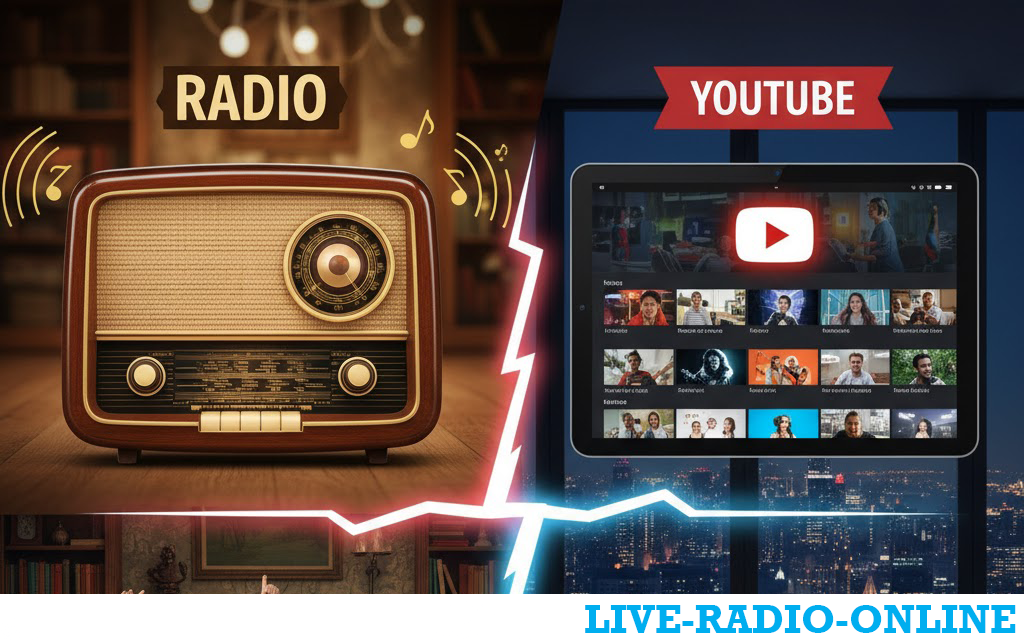
For many people, YouTube is a fantastic music source, but the radio offers distinct advantages in specific areas.
Here’s a breakdown of why listening to music on the radio can be considered better than on YouTube, depending on your priorities.
1. Curation & Discovery
-
Radio: Professional DJs and curated programming introduce you to new music within a genre you already enjoy. They provide context, artist backgrounds, and create a cohesive flow. You often discover new favorite songs and artists without any effort.
-
YouTube: The algorithm is powerful but can create a "filter bubble." It primarily recommends music similar to what you've already listened to, making it harder to stumble upon something genuinely different or new. You have to actively search for new music.
2. Effortlessness & Passive Listening
-
Radio: It's the ultimate "lean-back" experience. You just turn it on. There are no playlists to create, no songs to skip (unless you change the station), and no screen to look at. It provides a continuous, uninterrupted stream of music, perfect for work, driving, or relaxing.
-
YouTube: Requires active choice. You have to search for a song, a playlist, or a live stream. You are constantly managing the experience—skipping ads, avoiding clickbait thumbnails, and selecting the next video. This can be mentally taxing.
3. Sound Quality (For Music Purists)
-
Radio: FM radio, in particular, often provides a consistent, high-quality audio signal that is not heavily compressed for streaming. While not as high-resolution as some paid streaming services, many audiophiles argue that a good FM tuner receiving a strong signal can sound warmer and more dynamic than a compressed YouTube stream.
-
YouTube: The audio on many music videos is compressed to save bandwidth (typically at 126 kbps AAC or 192 kbps Opus). While this is acceptable for most casual listeners, it lacks the depth and clarity of higher-bitrate streams from services like Spotify, Tidal, or even a clean FM signal.
4. Data and Battery Usage
-
Radio: Traditional car or home radios use zero mobile data and have a minimal impact on your phone's battery if you're using a radio app in the background.
-
YouTube: Streaming video is a major drain on both your mobile data plan and your device's battery. Listening for an hour can use hundreds of megabytes, making it impractical for users with limited data.
5. Human Connection and Community
-
Radio: Live DJs create a sense of shared experience and local community. They give traffic reports, weather updates, local news, and take listener requests. This human element makes it feel like you're part of something larger, especially during a major local event or a popular morning show.
-
YouTube: It's a solitary, global platform. There is no local connection, and the interaction (comments) is asynchronous and not tied to your physical community.
6. Legality and Artist Compensation
-
Radio: Terrestrial radio stations pay performance royalties to songwriters and publishers through licensing bodies like ASCAP and BMI. The system is well-established, ensuring creators are compensated for the use of their work.
-
YouTube: The platform has a complex and often criticized royalty system. While it does pay royalties, the rates per stream are notoriously low compared to other streaming services, and the presence of unlicensed uploads can sometimes divert revenue from artists.
7. Reliability and Accessibility
-
Radio: AM/FM signals are widely accessible for free and are incredibly reliable during emergencies (power outages, natural disasters) when internet and cellular networks may be down. A simple battery-powered radio can be a lifeline.
-
YouTube: Requires a stable and continuous internet connection. It's completely unusable if your Wi-Fi or cellular data is unavailable or spotty.
When is YouTube Clearly Better?
It's only fair to acknowledge YouTube's strengths, which is why so many people use it:
-
On-Demand Access: You can listen to any song, anytime.
-
Music Videos: The visual component is a core part of the experience for many songs.
-
Deep Catalog: Access to rare live versions, remixes, bootlegs, and obscure artists not found on radio.
-
Cost: It's free (with ads).
Conclusion
It's better to listen to music on the radio than on YouTube if you value:
-
Discovery and Curation
-
Effortless, Passive Listening
-
Data and Battery Conservation
-
Local Connection and Human DJs
-
Reliability during travel or emergencies
YouTube is the better choice if you value:
-
Total control over your playlist
-
Watching music videos
-
Access to a massive, on-demand catalog
-
Discovering deep cuts and live performances
For a pure, lean-back music listening experience, radio often provides a more curated, effortless, and community-oriented journey.


